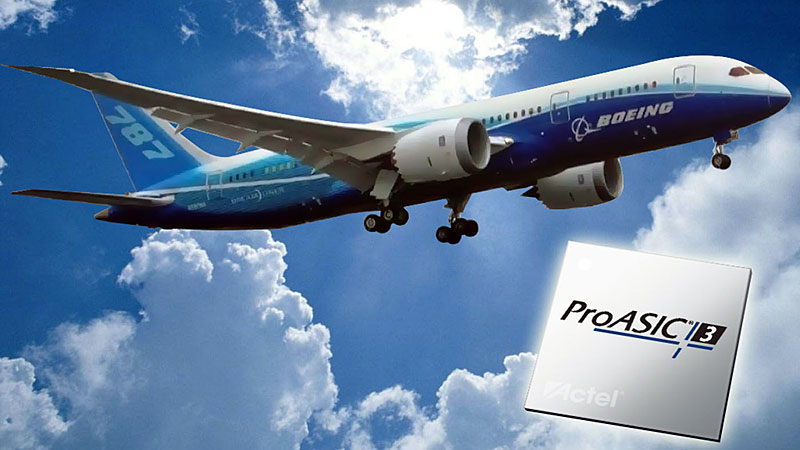
Reliable aviation electronics are critical to the safety of increasingly complex aircraft. Where commercial aircraft fly, radiation is different from on the ground, and that means that electronics need special protection. On January 20, 2010, Actel announced that its low-power ProASIC3 and ProASICPLUS FPGA families have been designed into flight-critical applications on the new Boeing 787 Dreamliner commercial airliner. Flight computers, cockpit displays, engine control and monitoring systems, braking systems, safety warning systems, cabin pressurization and air conditioning systems, and power control and distribution systems all make use of Actel's highly-reliable flash-based FPGAs. The commercial aircraft successfully completed its maiden test flight on December 15, 2009.
Actel's flash-based ProASIC3 and ProASICPLUS devices are low-power, single-chip, live-at-power-up solutions that combine high-performance and high-reliability with nonvolatility and in-system reprogrammability. Unlike SRAM-based FPGAs, Actel's flash-based FPGAs are immune to neutron-induced configuration upsets. For an avionic system designer, this immunity is essential because the occurrence of troublesome neutron radiation is approximately 150 times higher at commercial aviation altitudes than at sea level. Particularly detrimental in safety-critical aerospace applications, radiation-induced configuration upsets can cause SRAM-based FPGAs to lose vital configuration data and consequently behave unpredictably.